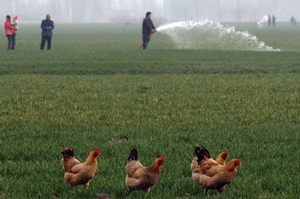Wonton history points to the dumpling’s origin in Northern China where wheat products abound (Junru, 11). The production of wheat noodle products in China dates back to 500 BC; the eventual mastered art of grinding flour promoted noodle consumption throughout the country (Newman, 38). Many food historians believe wheat-based noodles developed separately in both China and Italy, but the earliest records of noodle production are found in China (Newman, 39). Dumpling consumption dates back to 200 BC during the Han Dyansty (Junru, 45). Legend holds that Marco Polo introduced these dumplings from China to Italy where they transformed into ravioli (Anderson, 118). During medieval times, however, wheat was considered a luxury in Northern China, so dumplings held the status of an elite, fancy cuisine (Anderson, 54). Wontons were still considered delicate and exclusive around 500 AD, during which the wonton exists in the earliest record of dumplings in ancient literature. The unnamed historic text indicates that wontons were “shaped like half moon and food was passed around the world” (“The History of Dumplings”). The evolution of wonton consumption in soup occurred in the Tang Dynasty (around 600 AD); wonton soup still persists as the most popular way to eat the dumplings (“The History of Dumplings”). Although the dumpling originated in northern China, it eventually spread to southern China at an indiscernible time and integrated itself into Cantonese cuisine. The Cantonese, the earliest Chinese immigrants to the U.S., brought with them the wonton tradition.


